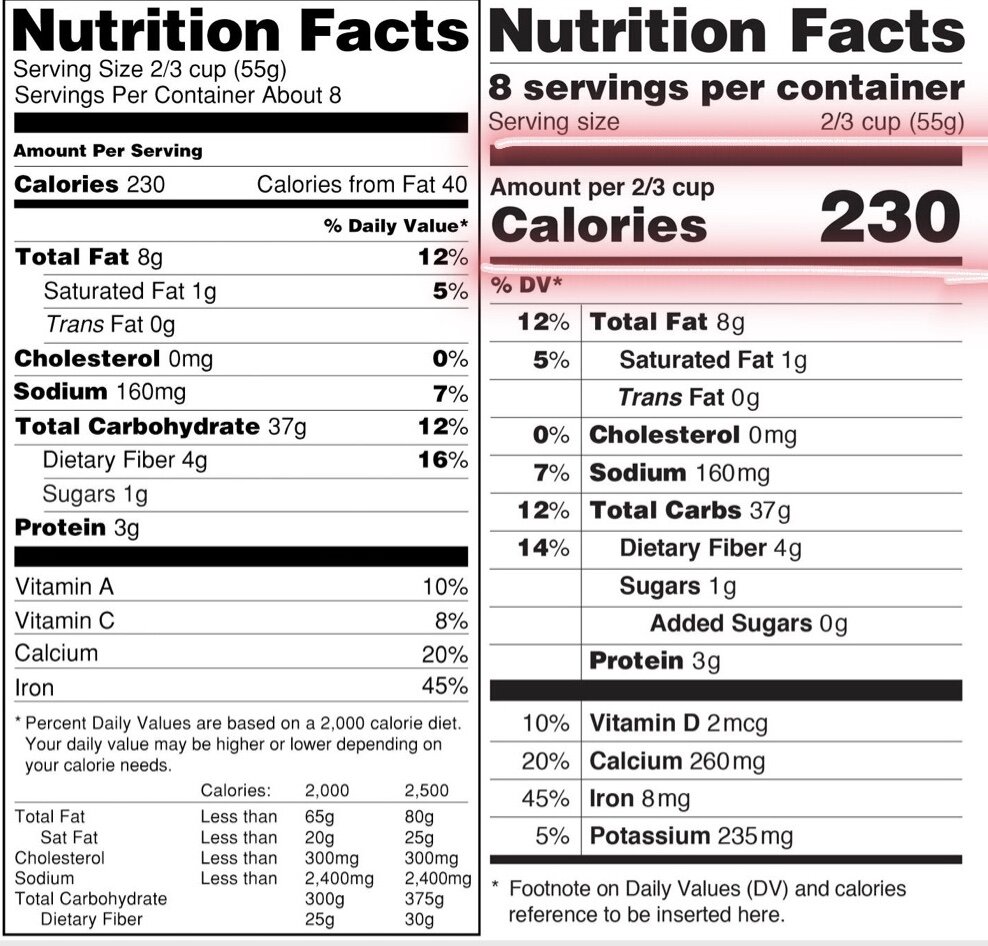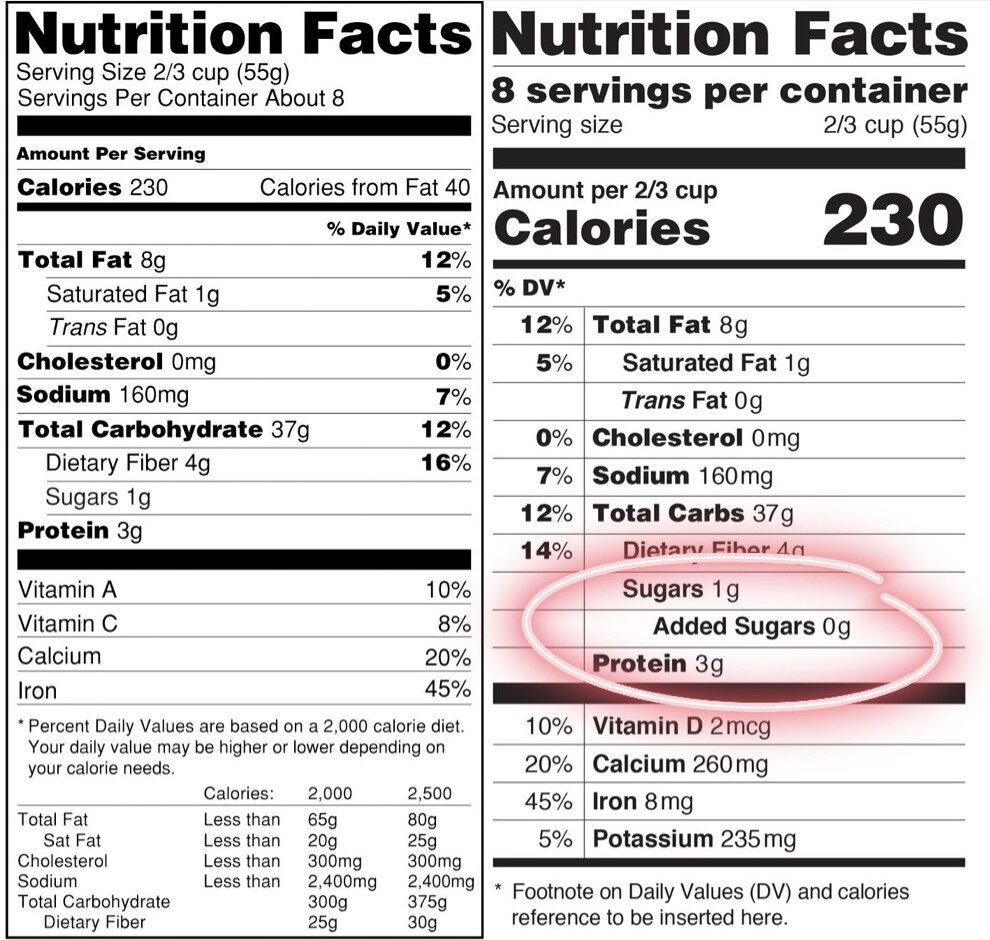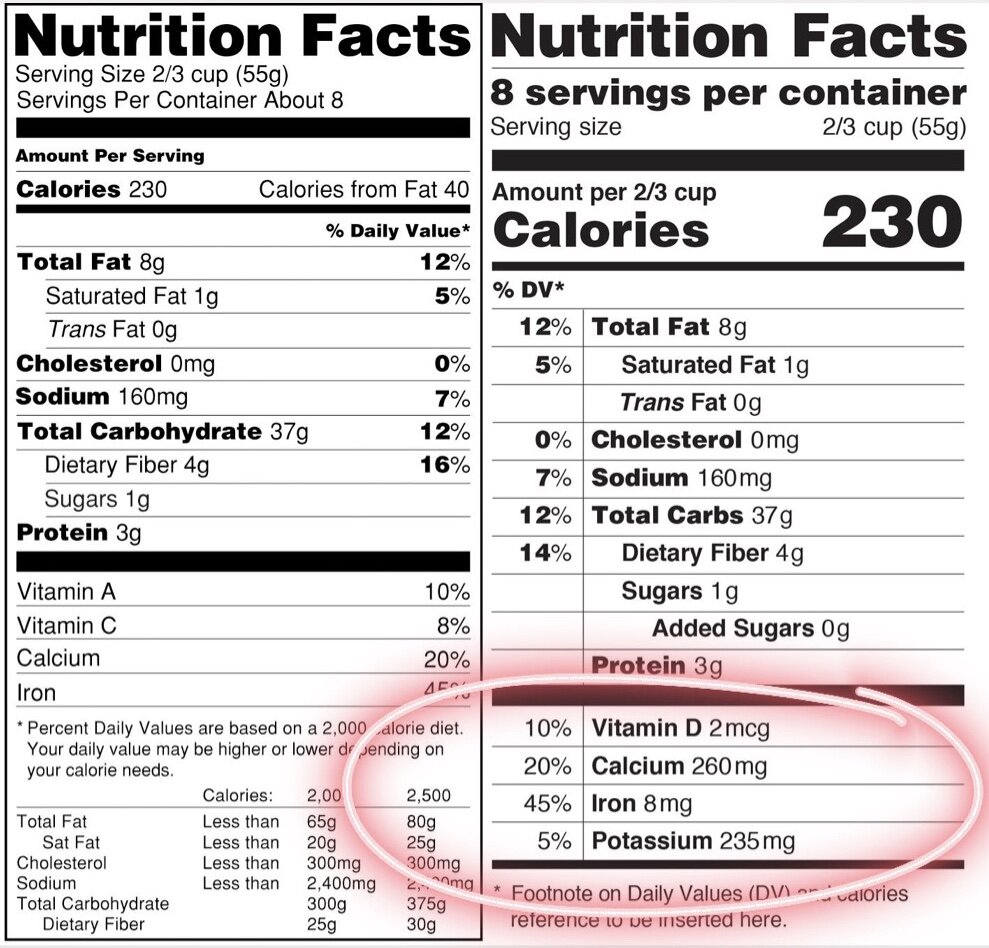How To: Read the New Nutrition Label
NOTICE ANYTHING NEW ON THE LABELS OF THOSE PACKAGED FOODS?
Okay, so it’s not totally new, but it’s been in the works for the last two years and is something you’ll see on every food package by 2021. It’s the new nutrition label! With it being National Nutrition Month, I thought I’d keep the nutrition vibe going and talk about something that might impact shopping for foods more than we think.
In May of 2016, the FDA ruled that nutrition labels would be updated to reflect newer scientific information about nutrition content. A change like this obviously can’t happen overnight, so companies, based on their overall annual income are required to update their nutrition labels to match the new format by with 2020 or 2021 (1).
SO, WHAT’S NEW… AND WHY DO I CARE?
The whole point of this change is to empower consumers to make more well-informed decisions when it comes to purchasing packaged foods. Here are a couple of the big changes you’ll want to keep an eye out for.
DESIGN
So clearly some things have been moved around between the old and the new version. Bold print highlights the total servings in the package and the calorie amount in a single serving. I think this is going to be a BIG eye opener for some consumers. I hear a lot that people are confused about the number of servings in a bag or box, and I think this change will help clear that up. PLUS, the bigger print makes these facts more of a focal point for consumers. Visually a couple facts have been moved, such as the Daily Value (DV) percentage. The numbers are still based on a 2000 calorie diet, just moved to the left side of the label.
SERVING SIZES
This is a big one. Serving sizes are getting bigger! It was decided to change the serving size listed to fit what consumers are actually eating, not what they “should be” eating. For example, ice cream labels used to say 1/2 cup is equal to one serving. With this new rule, the serving size is increased to 2/3 cup, since it is more realistically what we are probably eating in a single serving (1). Think about those “single serving” chip bags that have 1 1/2 or even two servings in them. This can be pretty deceiving considering the size of the package, so changing the serving size to include the whole bag is a better way to inform the public of what hoe much are eating.
This might seem a little counter-intuitive considering the obesity epidemic the nation finds itself in. Is increasing the serving size really going to be helpful? For foods that are between serving sizes, and are foods that consumers are typically eating the entirety of at once, such as a 20 oz. bottle of soda, or a can of soup, the nutrition facts provided will be for the entire product amount since that is how it is typically eaten (1).
Those products that are not single serving items, the number of servings is now provided in larger, bold print, and the serving size is listed twice on the label. This change should reiterate to consumers how much is in the package, and make it more realistic to what they are actually eating.
ADDED SUGARS
This one is big! Instead of identifying how much sugar is in a product, we are now differentiating between natural and added sugars! On the old label, the sugar content could be deceiving and with the current societal demonizing of sugar, made a lot of products look like “bad” choices. Identifying the amount of added sugars can help consumers tell the difference between naturally sweetened products, like those made with fruits or dairy, and which have been sweetened even more with sugar or alternative sweetening products.
This was added because of the goal outlined in Dietary Guidelines of 2015-2020 for people to consume less than 10 percent of their daily calories from added sugars. This was decided based on scientific evidence that consuming more than this amount makes it more difficult to meet the body’s other nutritional needs (1).
REQUIRED NUTRIENT LABELING
Nutrient concerns have changed a lot in the last 20+ years since the last nutrition label was put together, so the required information to be included was due for an adjustment. Vitamin D and potassium are being added to the list on the bottom of the label, along with iron and calcium, which were previous requirements. Vitamins A and C are no longer required but may be included voluntarily, along with any other nutrients. Newer scientific findings have determined that vitamin A and C intake are not as big of a concern as it was in the past and that there should be more focus on the intake of adequate vitamin D and potassium (1).
ANY DOWNSIDES TO ALL THIS CHANGE?
Now, more than ever, consumers are thinking about what they are putting into their bodies, and I think that these simple changes in the nutrition label that we see on every packaged product will help that. I think that these changes will bring more awareness of consumers to what is in a product and make it easier to understand how much they are actually eating.
Eating healthy can seem incredibly overwhelming for some who are trying to make a change in their lives, and any help that that industry can do to better facilitate the choice of healthier options seems like a no-brainer.
Keep an eye out on all those packaged goods! If you haven’t noticed the changes already, I’m sure you will now, and it will be even more present as we near the year 2020.
What do you think of the new label? I’d love to hear your thoughts on whether this change seems helpful or harmful to the overall health of the nation! For more information, and some FAQ check out the link below to hear the story straight from the FDA.
xx,
mallory






